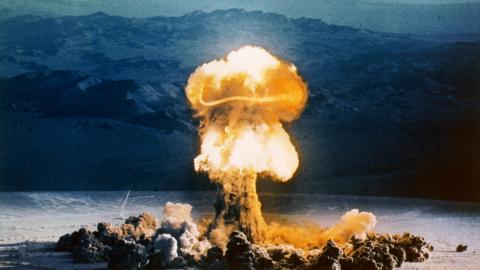In the Washington Post (“Since Marijuana Legalization in Colorado, Highway Fatalities at Near-Historic Lows” August 5, 2014), Radley Balko looks at preliminary data from Colorado since 2001 and draws two conclusions: Traffic fatalities for the months from January to July of 2014 fall below “historic highs” for those months counted since 2001; and further, traffic fatalities in 2014 are “below average” for that period; in fact, they are said to be “closer to historic lows” since 2001. But are these conclusions pertinent to the question of marijuana’s impact, or just a necessary outcome of the simple math?
If the number of events per year starts to decline steadily over time, it’s possible to look at any stretch of 14 years and look for meaning. But it’s complicated. Traffic fatalities are declining steadily in the United States in recent decades. For example, in Colorado, there were 606 traffic fatalities in 2005. That number fell to only 548 by 2008, and by 2011, they had fallen further to only 447.
Inevitably, just because of the way numbers work, the most recent years’ traffic fatalities will be lower than those from the beginning of the series. Because the phenomenon is declining over time, the fatalities for 2014 will be fewer than the fatalities for 2005, and even lower than those for 2001. If you took the average number of fatalities over time (the statistical mean), you would add all fatalities together for the years in question and divide by the number of years. It follows that the earliest years will likely have fatalities above the average and the later years will fall below the average; that result is contained in the meaning of the terms. For the three years I’ve provided, the average is 534. Sure enough, the earliest year (2005) is above average, while the most recent year (2011) is below average. In any such declining series, earlier years will likely be higher than subsequent years, and the latest year should be the lowest yet.
All of this is pretty elementary, but it’s easy to overlook in the quest for a rhetorical point concerning the possible impact of marijuana legalization. To see the impact of such a new factor, you can’t just add up the number of deaths per year and draw a conclusion. You need to examine the rate, which would be the number of fatalities per number of miles driven, and see whether that is changing in relation to the new factor. Should the number of deaths per 100,000 miles driven suddenly go up, for instance, then you would have grounds for suspecting the impact of the new factor. But what if the rate continues downward, but at a different pace, either a faster decline, or a slower decline? To tease out your new factor, you have to do a more complicated analysis than just compare the years in question to the average number of deaths for all the years.
These are the factors that Radley Balko’s claims have overlooked. Yes, traffic fatalities in 2014 are, so far, “below average,” but it is not clear what that means about the marijuana factor.
What about the second claim, that the results are “closer to historic lows”? Balko’s graphs show a line for 2014 and it falls between what are termed “historic highs” and “historic lows.” But these “historic” years are not actual data from real years. Rather, Balko constructed artificial years, with composite results. That is, the highest January from any year was added to the highest February from any year and so on; likewise for the “lowest years.” It’s true that the actual data from 2014 falls between these two composites. But that is just probability in action. The odds are overwhelming that any actual year will not “roll the dice” on each of seven months (January to July) and come up successive highs for each month. Hence, to say that 2014 is “closer to the historic lows” follows from both the probability and the fact that there has been a steady decline in fatalities over time.
Overall, we need to step back and assess what can be reliably known about the impact of more readily available marijuana on a host of social indicators, affecting both residents of Colorado and those who transit the state and use the drug when there. One of those impacts is likely to be highway safety. There are parallels to be found in the effect of changes to state legal drinking age laws in the past; when some states lowered the age of access to alcohol to 18, there were measurable effects on highway safety, and they sometimes affected surrounding states whose underage residents transited to the state with a lower age, drank immoderately and then drove home.
The effect of marijuana use on driving is more complicated; the level of impairment is difficult to assess, and marijuana, unlike the more transient alcohol, remains in the system for a long time. The THC intoxicating compound is more persistent and cumulative, and its presence might well be affecting a host of judgment and reaction time behaviors.
All that said, the specific measure of in-state traffic fatalities is not a very effective arena to assess the potential impact of more marijuana more widely used. Highway safety is subject to a large number of variables, as are accidents involving driver or pedestrian impairment, some of which produce fatalities. Long-term, the effect of more drug use is likely to be detectable, against the multitude of other background factors, which themselves are not constant in their effect. In general, highways are safer today than they were short years ago. Greater use of drugs, however, has not been a factor in making them more safe, and an increase in such use is unlikely to be beneficial. Beyond that, we simply at this point cannot say. To try and detect a signal regarding the impact of legally available recreational marijuana in a single state’s fatality record for the first seven months of the new regulations is simply not productive, at this point, and is not likely to tell us much about the overall, and potentially lasting, effect on society.






















